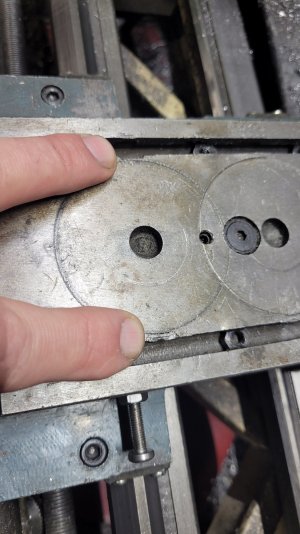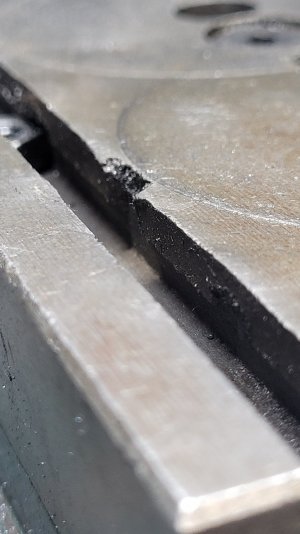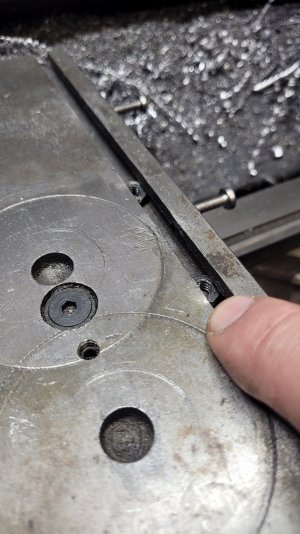KeeponDragon
Super User
It started with wanting more rigidity.
First the AXA tool post with the "steve bedair special" tool post mount.
It could also be the iron used in the slide.
I feel like the first cause was a lack of T-slot nuts when I took this lathe over.
The original owner seemingly made it habit to horse the fasteners down with a 3/4 breaker bar. (sarcasm of course lol)
The locations where the original 2 bolt clamp were, are erupted. If that's proper use of the word in this case.
Now with the 4 bolt clamp, I'm getting the same eruptions.
I use a 5inch long, 10mm wrench to tighten the clamp bolts. There isn't a lot of leverage to reef on it like a 300lb gorilla
I'm posting this, while getting paid to do the day job lol...so I can't even snap a pic to show you folks what I'm babbling about.
I will soon though...
My question to the crowd...is there somewhere north of the 54-40 that makes these for sale?
thanks all
-Drags
First the AXA tool post with the "steve bedair special" tool post mount.
It could also be the iron used in the slide.
I feel like the first cause was a lack of T-slot nuts when I took this lathe over.
The original owner seemingly made it habit to horse the fasteners down with a 3/4 breaker bar. (sarcasm of course lol)
The locations where the original 2 bolt clamp were, are erupted. If that's proper use of the word in this case.
Now with the 4 bolt clamp, I'm getting the same eruptions.
I use a 5inch long, 10mm wrench to tighten the clamp bolts. There isn't a lot of leverage to reef on it like a 300lb gorilla
I'm posting this, while getting paid to do the day job lol...so I can't even snap a pic to show you folks what I'm babbling about.
I will soon though...
My question to the crowd...is there somewhere north of the 54-40 that makes these for sale?
thanks all
-Drags






